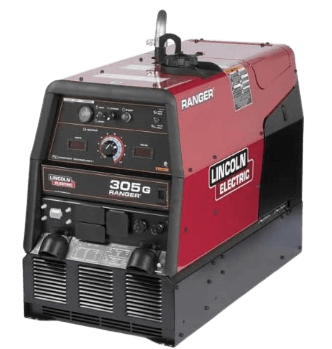Table of Contents

Lincoln Electric has been in the industry for 120 years. That’s why it’s a huge name in the metal fabrication industry and many consider it a leader in the industry. John C. Lincoln started the tradition in 1895 when he founded the Lincoln Electric Company. His capital investment was only $200, perhaps the only amount of money he needed to design his own electric motors.
James F. Lincoln, his younger brother, joined him in 1907. Together, they expanded the product line by manufacturing battery charges for electric cars. But it wouldn’t be until 1909 when their first welding set would be made and until 1911 when the Lincoln Brothers introduced the first variable-voltage portable welder. However, John C. decided to focus on doing scientific investigation and relinquish company leadership to James F. in 1914 (1).
James F. Lincoln’s Employee-Centered Vision
James F. added his own fingerprint to the company by introducing piecework pay and creating the Employee Advisory Board — initiatives that earned Lincoln Electric a good reputation from the perspective of its workforce. To provide more for the welfare of its employees, the company provided group life insurance in 1915. These measures give us a glimpse of how the company values its workers. At the end of the day, it’s not just how well a business owner makes products but also how well he treats the people who work for his business.
Lincoln Electric treats its employees very well. They get paid vacations. In fact, they were some of the first American employees to earn paid vacations. They were also some of the first workers to have been able to own stocks. Yes, in 1929, someone who worked for the company could get hold of a stock ownership plan. Even during the recession in the 1980s, when sales plummeted, no employee was laid off. But it’s not just about how a company owner treats his employees.
Welding Training and Education
The other important thing a company does is how it treats its community. Lincoln Electric has always valued education and training. Thus, the Lincoln Electric Welding School was founded in 1917. Since then, the school has trained over 100,000 welders.
Part of the company’s commitment to educating people includes the publishing of the Procedure Handbook of Arc Welding Design. The first edition of this handbook was released in 1933. Today, it’s in its 13th edition and over 2 million copies have been sold. Three years later, James F. created a nonprofit educational organisation called the James F. Lincoln Arc Welding Foundation.

Lincoln Electric Ranger 305G Multiprocess Welder/Generator
Shifting towards welders
You may think that Lincoln Electric’s chief product was welders, but that only became the case in 1922, which was 27 years after its inception. In that year, the company produced more welding machines than motors for the first time. This heralded Lincoln Electric’s swing to the welding equipment industry. In 1927, they introduced a coated electrode that could create welds with up to 50% greater tensile strength.
During World War II, Lincoln Electric saw dramatic growth in business as more ship hulls needed welding. It was ironic that the company opened a huge market for arc welding equipment, while motor production ground to a halt. It was also during this time when a huge number of women was added to the workforce. It wasn’t until the 1960s, when the company began manufacturing motors again.
John C. passed away in 1959, while James F. passed away in 1965. Hence, the 70s ushered a new management era for the company. George E. Willis became the president of the company. William Irrgang became the chairman. In 1977, they established an electrode plant in Mentor, Ohio, and started manufacturing domestic wire consumables.
Lincoln Electric has seen changes in leadership throughout the decades. Christopher L. Mapes has taken chairmanship of the company since 2013, when John M. Stropki retired. In the same year, operating profit margins peaked at a record high of 15%. The company also acquired Robolution GmbH and Burlington Automation, just two of its numerous acquisitions throughout the company’s long history. The company earned another E-Star Award for its remarkable export program. Lincoln Electric continues to be a pioneer of innovation. It also continues to expand as it acquires properties and technologies that advance its product development and enrich its training solutions — all in the name of its vision for 2020.
Why Lincoln Welders?
Because Lincoln Electric has devoted over a century to training and education, it values educating buyers. So you’re not going to be left in the dark after purchasing one of its welding machines.
Another reason to choose a Lincoln welder is the availability of consumables. It’s a company that has been around for more than 125 years, so to say it has an established market for consumables and accessories is stating the obvious
Lincoln Electric just ages like wine, getting more refined as technological advancement is well baked into its manufacturing approaches.
Also, you get more support from the company itself, as well as from numerous users online who provide help and tips to newbies.
Eventually, every buyer is concerned with the performance of a unit. But really there’s no question that Lincoln welders are some of the best on the market, if not the best in terms of build quality, durability, features, and power.
Conclusion
With everything that’s been said about the company that makes Lincoln welders, nothing is left to doubt. You get more than what you pay for from the people who have thought hard and worked hard to provide welding equipment that works and lasts for a long time.


